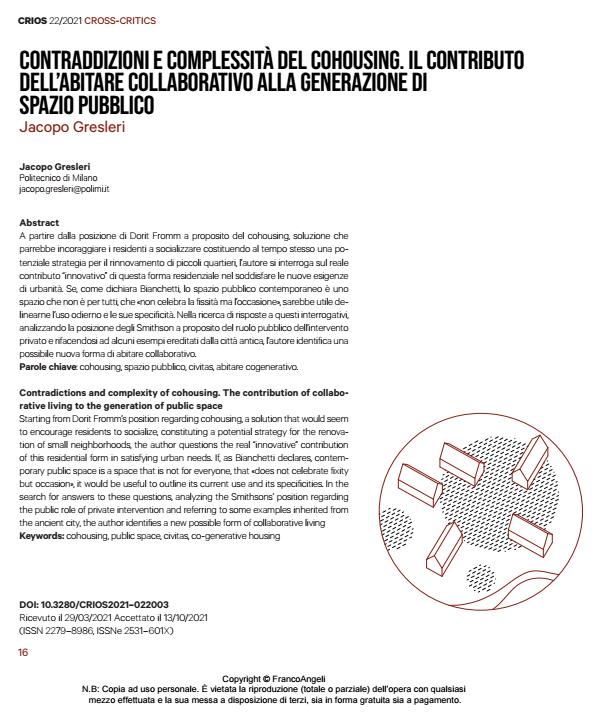Contradictions and complexity of cohousing. The contribution of collabo¬rative living to the generation of public space
Journal title CRIOS
Author/s Jacopo Gresleri
Publishing Year 2022 Issue 2021/22
Language Italian Pages 14 P. 16-29 File size 275 KB
DOI 10.3280/CRIOS2021-022003
DOI is like a bar code for intellectual property: to have more infomation
click here
Below, you can see the article first page
If you want to buy this article in PDF format, you can do it, following the instructions to buy download credits

FrancoAngeli is member of Publishers International Linking Association, Inc (PILA), a not-for-profit association which run the CrossRef service enabling links to and from online scholarly content.
Starting from Dorit Fromm’s position regarding cohousing, a solution that would seem to encourage residents to socialize, constituting a potential strategy for the renovation of small neighborhoods, the author questions the real "innovative" contribution of this residential form in satisfying urban needs. If, as Bianchetti declares, contemporary public space is a space that is not for everyone, that «does not celebrate fixity but occasion», it would be useful to outline its current use and its specificities. In the search for answers to these questions, analyzing the Smithsons’ position regarding the public role of private intervention and referring to some examples inherited from the ancient city, the author identifies a new possible form of collaborative living
Keywords: cohousing, public space, civitas, co-generative housing
Jacopo Gresleri, Contraddizioni e complessità del cohousing. Il contributo dell’abitare collaborativo alla generazione di spazio pubblico in "CRIOS" 22/2021, pp 16-29, DOI: 10.3280/CRIOS2021-022003